Asiaadamslemar
On this page, you find all documents, package deals, and flashcards offered by seller asiaadamslemar.
- 7
- 0
- 0
Community
- Followers
- Following
7 items
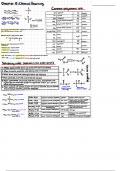
Chemical Reactivity
Chemical reactivity in general chemistry refers to how different substances interact and undergo transformations during chemical reactions. It is influenced by factors such as the nature of the reactants, the conditions of the reaction (temperature, pressure, concentration), and the presence of catalysts. Understanding chemical reactivity is key to predicting reaction outcomes and designing efficient processes in various chemical industries.
- Summary
- • 3 pages •
Chemical reactivity in general chemistry refers to how different substances interact and undergo transformations during chemical reactions. It is influenced by factors such as the nature of the reactants, the conditions of the reaction (temperature, pressure, concentration), and the presence of catalysts. Understanding chemical reactivity is key to predicting reaction outcomes and designing efficient processes in various chemical industries.
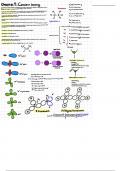
Covalent Bonding
Covalent bonding occurs when two atoms share electrons to achieve a more stable electron configuration, typically forming molecules. This type of bond usually happens between nonmetals and results in the formation of strong, stable compounds. The shared electrons allow each atom to attain a full outer electron shell, following the octet rule (or duet rule for hydrogen).
- Summary
- • 2 pages •
Covalent bonding occurs when two atoms share electrons to achieve a more stable electron configuration, typically forming molecules. This type of bond usually happens between nonmetals and results in the formation of strong, stable compounds. The shared electrons allow each atom to attain a full outer electron shell, following the octet rule (or duet rule for hydrogen).
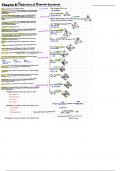
Prediction of Molecular Geometries
Understanding molecular geometries is essential in general chemistry for predicting how atoms are arranged in a molecule, influencing its properties and reactions. Using models like VSEPR (Valence Shell Electron Pair Repulsion), students can predict the three-dimensional shapes of molecules based on electron pair repulsions around a central atom. This concept is crucial for explaining molecular polarity, reactivity, and interactions with other molecules.
- Summary
- • 1 pages •
Understanding molecular geometries is essential in general chemistry for predicting how atoms are arranged in a molecule, influencing its properties and reactions. Using models like VSEPR (Valence Shell Electron Pair Repulsion), students can predict the three-dimensional shapes of molecules based on electron pair repulsions around a central atom. This concept is crucial for explaining molecular polarity, reactivity, and interactions with other molecules.
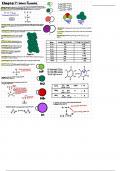
Lewis Formulas
Lewis formulas, or Lewis structures, are diagrams that represent the bonding between atoms in a molecule and show lone pairs of electrons. They help illustrate how atoms share or transfer electrons to achieve a stable electron configuration, usually following the octet rule. These structures are essential for predicting molecular geometry, reactivity, and properties.
- Summary
- • 2 pages •
Lewis formulas, or Lewis structures, are diagrams that represent the bonding between atoms in a molecule and show lone pairs of electrons. They help illustrate how atoms share or transfer electrons to achieve a stable electron configuration, usually following the octet rule. These structures are essential for predicting molecular geometry, reactivity, and properties.
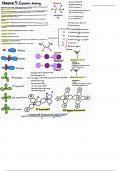
Covalent Bonding
Covalent bonding occurs when two atoms share electrons to achieve a stable electron configuration, usually fulfilling the octet rule. This type of bond typically forms between nonmetal atoms, where the shared electrons create a strong connection that holds the atoms together. Covalent bonds can be single, double, or triple, depending on the number of shared electron pairs, influencing the molecule’s structure and properties.
- Summary
- • 2 pages •
Covalent bonding occurs when two atoms share electrons to achieve a stable electron configuration, usually fulfilling the octet rule. This type of bond typically forms between nonmetal atoms, where the shared electrons create a strong connection that holds the atoms together. Covalent bonds can be single, double, or triple, depending on the number of shared electron pairs, influencing the molecule’s structure and properties.
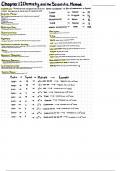
Chemistry and the Scientific Method
The scientific method in chemistry is a systematic approach to exploring chemical questions and phenomena. It involves making observations, forming hypotheses, conducting experiments, and analyzing results to draw conclusions. This process helps chemists develop reliable, evidence-based knowledge and refine theories about matter and its interactions.
- Summary
- • 2 pages •
The scientific method in chemistry is a systematic approach to exploring chemical questions and phenomena. It involves making observations, forming hypotheses, conducting experiments, and analyzing results to draw conclusions. This process helps chemists develop reliable, evidence-based knowledge and refine theories about matter and its interactions.
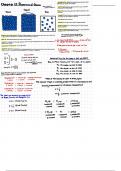
Properties of Gases
The properties of gases cover their behavior and characteristics, including pressure, volume, temperature, and amount of gas particles. These properties are interrelated by the ideal gas law (PV = nRT), which helps predict how gases will respond to changes in conditions. Additionally, gas properties are influenced by concepts such as kinetic molecular theory, diffusion, effusion, and real gas behavior under non-ideal conditions.
- Summary
- • 3 pages •
The properties of gases cover their behavior and characteristics, including pressure, volume, temperature, and amount of gas particles. These properties are interrelated by the ideal gas law (PV = nRT), which helps predict how gases will respond to changes in conditions. Additionally, gas properties are influenced by concepts such as kinetic molecular theory, diffusion, effusion, and real gas behavior under non-ideal conditions.
